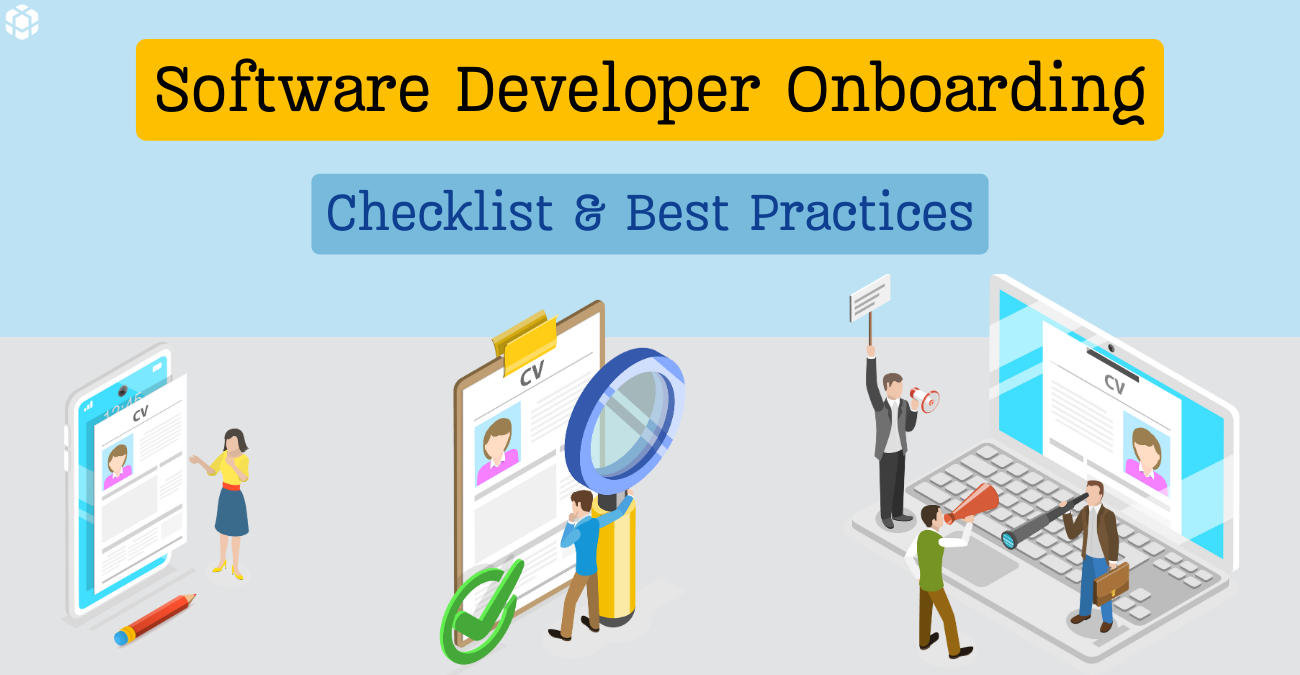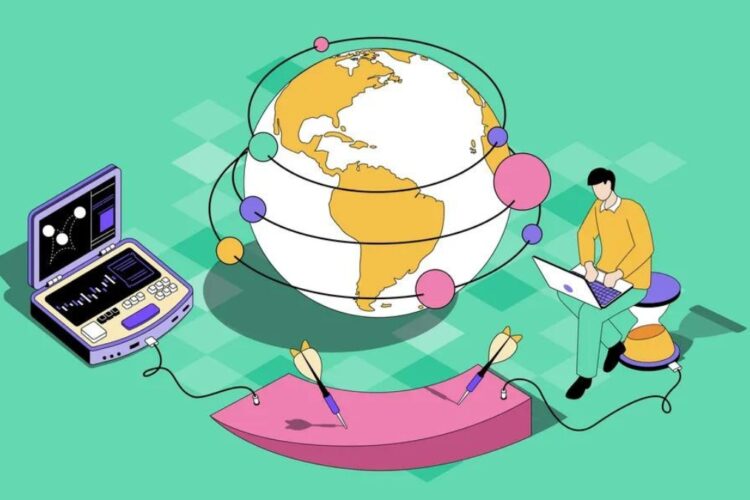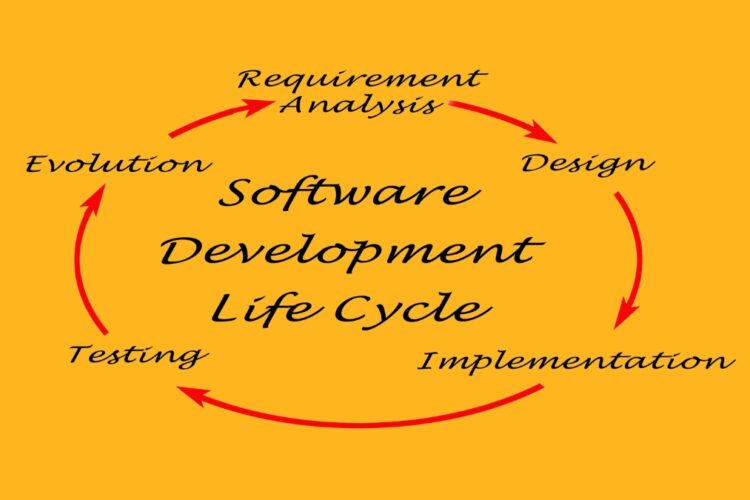
Is your company following all the protocols to make the newly onboarded developers feel at ease? Is their comfort your priority? If not, then you must refer to the checklist and best practices followed by other organizations, who not only make their newly recruited employees feel welcomed but also successfully retain them for more extended periods.
Developer onboarding has become an integral step in initiating the contract between the employees and the organization. Several businesses have raised the standards of treating their staff right, so it is only fair that even small startups embrace these changes and make the best of these developments.
Studies show that organizations with a strong onboarding process improve new hire retention by 82% and productivity by over 70%. Businesses often undervalue onboarding despite the fact that it is essential in many ways. Therefore, we have created an extensive guide to help you improve your developer onboarding procedure.
What is developer onboarding?
Developer onboarding refers to introducing a recently hired employee to the work environment and their job responsibilities. It entails acquainting them with the codebase, team dynamics, procedures, culture, and tools of the company.
Onboarding is important, even for businesses that hire only remote workers, as it involves more than acclimating new hires to their physical surroundings. It also involves discussions about the company’s mission, team dynamics, and cooperation and communication with other employees.
Companies face losses when they don’t properly onboard new hires. In most cases, the new hire bears the brunt of the blame. In order to make sure new hire feels at ease and can perform to the best of their abilities in their new role, onboarding should start as soon as they accept the job and continue for as long as needed.
Why is developer onboarding important?
Developer onboarding is more than just the familiarizing process, as it has many long-term benefits. For starters, it boosts productivity because the newly hired team member is well aware of their job roles from the start, so there is no room to slack off.
Secondly, though the process may seem financially taxing and resource-intensive, it pays off by reducing the need for extensive supervision, rework due to errors, and frequent disruptions caused by misunderstandings.
Lastly, developer onboarding has been attributed to longer employee retention periods, contributing to higher employee satisfaction and engagement. Employees become more committed and motivated to perform at work, which helps the company stay away from recruiting new staff every few months.
Complete developer onboarding checklist
A smooth onboarding period demands extensive planning and timely execution of the sequence of actions. For this reason, we have created this comprehensive checklist that you can use to review the essential tasks that are a necessary component of every onboarding phase.
Pre-Onboarding Checklist
Once the hiring decision has been made and the candidate is scheduled to begin work in a few days, you will need to refer to the pre-onboarding checklist to ensure they are welcomed into the organization.
Handle the paperwork
Staffing and recruiting involve a whole lot of paperwork that needs to be completed duly, and last-minute scrambling to get it done is not ideal. Therefore, make sure to finish all the paperwork in advance, which also includes gathering information from the new hire in the shape of forms.
When all of the paperwork is prepared ahead of time, the new employee won’t feel overburdened when they need to make references on the day of hire.
Organize information
During the onboarding process, multiple references must be provided immediately. For example, HR may be asked to refer to the documents in order to answer questions regarding the new hire’s competency.
Documents, including employment forms, verifications, benefits enrollment documents, and company-specific paperwork must be instantly available on hand. Therefore, it is ideal that the information is appropriately categorized and organized to avoid any last-minute confusion.
Send a welcome note or gift
Large organizations are continuously raising the standards of employee treatment, and sending personalized welcome gifts has just become one of the recent standards for many IT companies.
As a thank you for joining the company successfully, the HR department sets up a personalized note or kit that may contain a few small items branded under the organization’s name.
Provide access to tools and softwares
Before a new developer begins, ensuring access to necessary digital tools is crucial. This includes setting up IDEs, granting access to communication platforms like Gmail and Slack, and introducing project management tools such as Github, Asana, and Jira.
This checklist covers various software categories essential for their role. Additionally, providing access to internal resources like wikis or knowledge bases assists in familiarizing them with company workflows.
First-Day Checklist
Some necessary tasks to be taken care of on the first day of work are as follows:
Introduce the new hire to the team
New hires often feel uneasy at work on their first days, so a formal introduction with the team helps break the ice and make them comfortable. This not only involves mere introductions but also fosters a collaborative and supportive environment.
Encourage open dialogue and engagement among team members, highlighting not just their roles but also the teamwork required for collective success. This initial interaction lays the foundation for a cohesive team dynamic, creating an atmosphere where new ideas flourish.
Organize a company tour
Navigating the physical workspace is essential for a developer’s understanding of the company. A thorough corporate tour is more than just a way to get to know the location; it’s also a way to introduce the organizational culture. It provides an immersive experience that goes beyond the surface by encompassing departments, essential facilities, and common areas.
This holistic introduction familiarizes the new hire with the physical infrastructure and encourages a sense of belonging and alignment with its ethos.
Help them build connections with seniors
Building connections with seasoned professionals within the company constitutes an invaluable aspect of a developer’s onboarding process. In many cases, these senior colleagues also help new hires as their mentors.
Facilitate deliberate interactions between the new hire and senior team members, promoting an environment where insights are shared, experiences are learned from, and guidance is readily available.
First-Week Checklist
The first week after hire basically lays the foundation for the future operations attributed to that employee. During this period, everything sets in place, and things start to make more sense to the newly onboarded developer.
Share the company’s vision and mission in-depth
Even though the developer has likely already learned a great deal about the business, this task on the checklist must be completed in order to acquaint the new hires with the mission, vision, goals, and core values of the organization.
They might need more information about the company’s structure and workflow, which they can quickly gain from these information sessions or one-on-one meetings.
Provide access to documentation
Any organization must prioritize making information easily accessible, and this is especially true for new hires, who need to be given all the necessary login credentials to access the centrally stored data at any time from any location.
Information regarding particular projects and the work process is especially critical to circulate so the developer can understand the rationale and the details of your work procedures. Early documentation sharing will give the new developer plenty of time to review the information and gain a clear understanding of how to accomplish the project’s objectives.
Brief them about the company’s products
The majority of large organizations have experience with a range of products, including those they are currently servicing and those they intend to introduce in the future. The first week of onboarding must involve a brief session to discuss these products in detail to integrate the new employees into the dev operations seamlessly.
The task is especially critical for job roles such as maintenance and support engineers who are required to service already existing products associated with the company.
Arrange meetings on a regular basis
You can schedule one-on-one meetings with the new hire during the first week to discuss their progress and get their input on their experience thus far.
In addition, the meetings will help catch up on work, gain a better understanding of the new hire’s skill set, and set expectations for the future.
First-Month Checklist
By the end of the first month, the recruits possess a greater understanding of their job responsibilities and fit right in. Nonetheless, there are a few tasks that must be completed this month:
Analyze progress and record feedback
Regular evaluations throughout the initial month provide a valuable gauge of the new hire’s adaptation and progress. You can assess their grasp of assigned tasks, integration within the team dynamics, and overall performance. Documenting feedback helps offer insights into their strengths, areas for improvement, and any challenges faced.
Assign a real project
Involving the new hires in a tangible project lets them gain hands-on experience and a practical understanding of the company’s workflow, methodologies, and services.
Assigning such a project encourages a deeper immersion into the team’s objectives and instills a sense of responsibility and ownership. It’s an excellent opportunity for the new hire to apply their skills and forge connections within the company.
Pair programming
Encouraging pair programming sessions within the first month provides a valuable learning opportunity. Pairing them with experienced team members not only facilitates knowledge transfer but also helps the new developer understand best practices, coding standards, and team dynamics. This collaborative approach accelerates their learning curve and integrates them into the team more efficiently.
When does the onboarding process end?
There is no set time period that dictates the conclusion of the developer onboarding process. Still, many companies tend to mark the onboarding process as over after three months of hiring.
To effectively onboard a new developer, however, it is best not to rely on a set amount of time as this depends on the developer’s experience level, the culture of the workplace, and the complexity of the tasks involved. Everyone learns and integrates differently; a personalized approach acknowledges and supports those differences.
Milestones are a fantastic way to gauge progress, ensuring new hires achieve the necessary benchmarks. It allows flexibility and the ability to adapt the onboarding process based on how well someone is settling into the role and the company culture. Moreover, a culture of understanding and individualized growth is also encouraged in the company.
How does Codesy follow developer onboarding?
At Codesy, developer onboarding is prioritized as much as the recruitment process. The company ensures to provide the newly recruited staff with a comfortable and safe environment upon their welcome.
They are not only welcomed with great enthusiasm, but they are also given all the resources and assistance they could require. Additionally, Codesy manages all of its developers’ administrative tasks directly, ensuring that problems are resolved within the organization.





